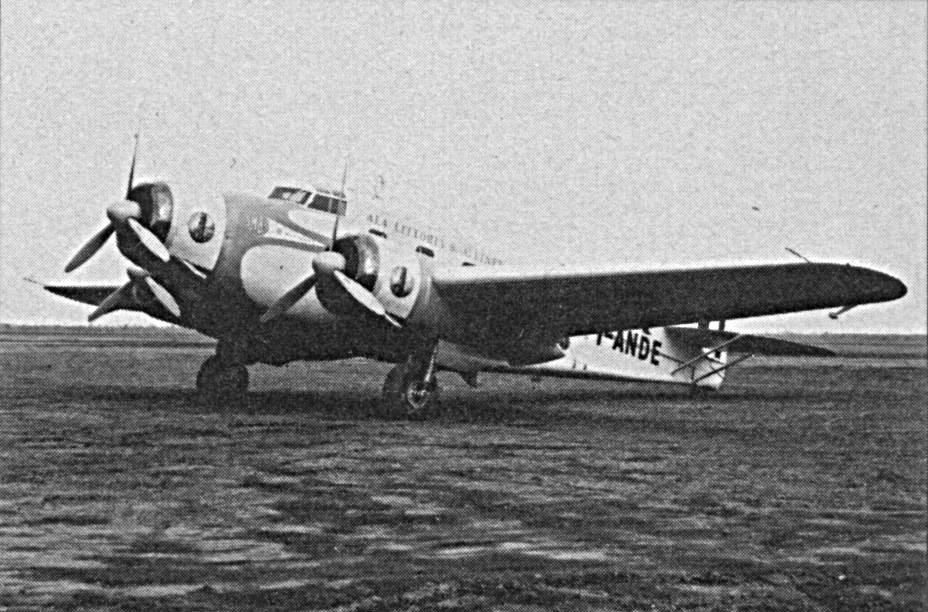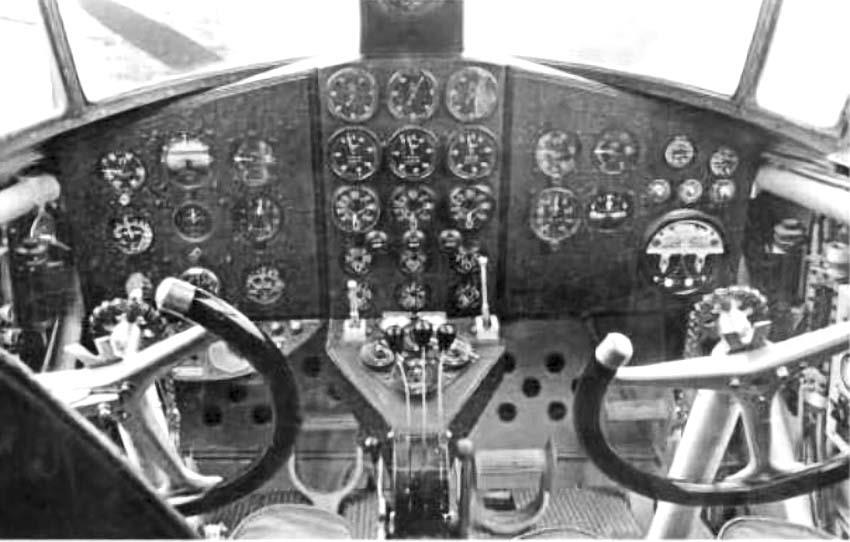The S.M.83, designed by the engineer Alessandro Marchetti , derives directly from the more famous Savoia-Marchetti SM79 of which it follows the lines of the initial transport version. The fuselage , shorter than the S.M.79, retained the same constructive principle, that is, a welded steel tube frame covered with wood and canvas panels. The lower wing and the surfaces of the tail plane were built entirely of wood. The front landing gear was retractable and complemented by a rear jockey wheel. The propulsion was entrusted to three Alfa Romeo 126 RC.34 9- cylinder 750 radial engines HP (552 kW ) each, mounted on the nose and on two wing nacelles.
The maximum range stated was 4,800 km. The maximum speed was slightly better than the bomber 444 km/h at 4,000 m due to the absence of the gondola and hump machine gun positions.
First flying on 19 November 1937, it entered into production for LATI, SABENA and other companies, but it had less success compared to the more economic and capable 18 seater Savoia-Marchetti S.73 even if had much improved performance. As a result, only 23 were built in two main series.
After Italy entered the war, the planes of Italian airlines were acquired by the Regia Aeronautica. Air navigation was militarized, but the companies ALI, LATI and Ala Littoria continued their activity. The SM83s were assigned to the 615th SAS Squadron. On June 22, 1940, air traffic to South America was reopened and the planes intended for this purpose were withdrawn from the squadron. In August 1940 the Sabena aircraft that had escaped this country were confiscated in Algeria and sold to Italy. Among them were three SM83s, which were to serve as reinforcement for the SAS. In the second half of 1941 the Romanian SM83s were also acquired. September 8th1943 12 SM83s still existed, of which five from LATI. The German Lufthansa confiscated three of these planes, two of which were scrapped and one sold to RACSA, a connection unit of the Italian Air Force. The German Air Force acquired a LATI aircraft and probably three other SAS SM83s. One of these aircraft flew for the Allies . The remaining four were probably destroyed in September 1943. The aircraft that were confiscated by the Air Force were most likely all scrapped. On 23 April 1945 an Air Force SM83 flew from Milan to Barcelonawith high-ranking personalities on board, including the parents of Mussolini's lover , Clara Petacci . The plane flew under the Croatian abbreviation NDH-301, as Spain had blocked the airspace for German and Italian aircraft. It was probably a RACSA No. 34008 I-MTU aircraft. A total of 23 SM83 aircraft were built between 1937 and 1940. This airplane could carry four to eleven passengers and had a flight range of up to 4,800 km. The maximum achievable speed was 444 km / h.





| Type |
Passenger plane crew 3-4 seat plus 10 passengers |
| Engine |
3 Alfa Romeo 126 R.C.34 |
| Dimensions |
Length 16,2 m, height 4,1 m, span 21,2 m, wing area 60 m2 |
| Weights |
Empty 6800 kg, loaded 10300 kg |
| Performance |
Max. speed 444 km/h at 4000 m, cruising speed 400 km/h at 5000 m (70 % power), 380 km/h at 5000 m (60 % power), range 1500 km, endurance 4 hours, service ceiling 8400 m (with 1 engine stopped 5500 m, climb to 3000 m 9 min., to 4000 m 13 min. 30 sec. |
| Type |
Werk.Nr |
Registration |
History |
|
34021 |
I-ARIS, D-AEAW |
Transferred to Lufthansa , stripped for useful parts and then scrapped |
|
34008 |
YR-SAE, MM.34008, D-AFPV |
25.09.1938 to LARES To Romanian Air Force 6.40 |
|
34023 |
OO-AUJ, MM.60519 D-AFPW |
Not delivered to Belgium. Delivered to French "Ministère de l'Air" at Marseille/Marignane, aircraft equipped with a new type of tail unit, used in airbridge between France and Algeria, seized by "Vichy French" authorities at Algiers, transferred to Italian Regia Aeronautica and registered MM60519, to Squadriglia 609/Gruppo 149 at Ciampino, to Squadriglia 605, used by Luftwaffe Luftflotte 2, Padova (I.), reported as D-AFPW, accident at Rome/Ciampino on 1 Nov 1940, Scrapped on order of LuftKommando 2 on 21 Nov 1943 (?). |





